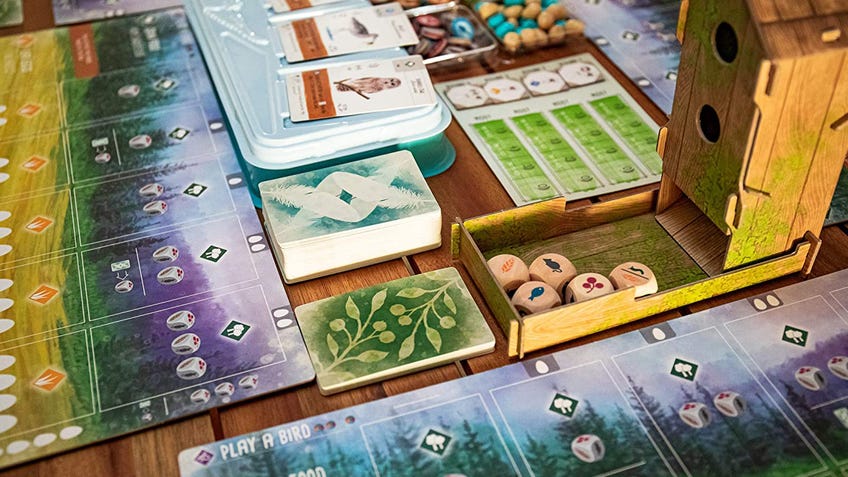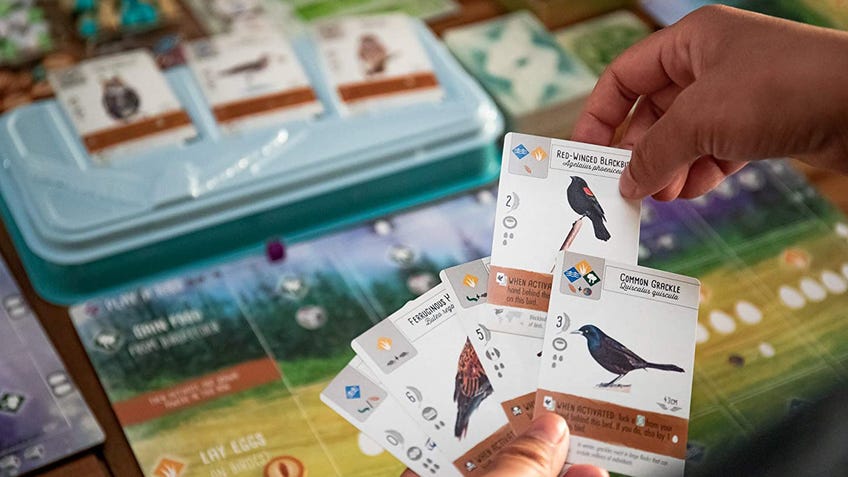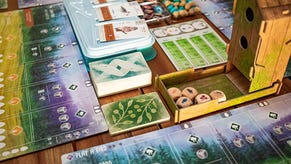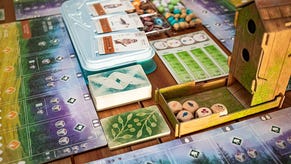Wingspan is so much more than its birdwatching theme
A golden egg.
Late last year, designer Elizabeth Hargrave announced that her debut board game Wingspan had successfully sold over 1 million copies. Released just three years ago, Wingspan has quickly become one of the most popular modern board games, breaking beyond the hobbyist crowd and into mainstream circles previously dominated by the likes of Catan and Carcassonne. A huge reason for this sudden and immense popularity is Wingspan’s unusual theme of birdwatching, which helps the game to stand out in a sea of otherwise inaccessible board games about fantasy universes or space colonisation.
The story behind Wingspan’s creation – that Hargrave, a passionate ornithologist, wanted to draw people’s attention to the importance of ecosystems and the beauty of local wildlife – makes the game even more enticing to a wider audience, encouraging fellow birdwatchers and environmentalists to experience playing it. Wingspan’s beautiful artwork – co-created by Ana Maria Martinez Jaramillo, Natalia Rojas and Beth Sobel – which includes separate illustrations for each of the game’s bird cards, certainly doesn’t harm the game’s mass appeal, making it worthy of sitting in anybody’s living room – regardless of whether they run in the usual tabletop circles or not.

All of this is to say that Wingspan’s theme has done a lot of the heavylifting when it comes to appealing to such a large audience, which is both wonderful – because it’s gotten a lot of people to play the game – and disappointing, because Wingspan is so much more than just its presentation.
Planning ahead is crucial to playing Wingspan well.
At its core, Wingspan is what’s called an engine-building game – meaning that it has gameplay mechanics that enable players to perform more actions and receive more benefits as the game progresses. How this works in Wingspan is that players lay down bird cards from their hands on their individual player boards, which will allow them to both score more points and unlock better actions on later turns. There are three separate habitats on each player’s board – the forest, the wetlands and the lake – which will serve as homes for the various bird cards they play. Deciding what cards to play when is dependent on a number of factors, all of which players will need to consider throughout the entire game.
Herein lies Wingspan’s greatest strength - its accessible entry-point and complex follow-through. The fundamental actions in the game are very simple - players lay down cards, gain food tokens, lay down eggs or draw cards – but the factors that decide those actions are far from it. Besides the final scoring at the end of the game, which encompasses things like the value of bird cards and the number of eggs laid, players also have to consider their secret goal cards and each round’s bonus scoring as well. Playing certain bird cards into certain habitats or laying down eggs on particular bird cards will determine how successful players are at a wide variety of scoring opportunities, thereby forcing players to carefully consider their options.
The satisfaction of choosing to perform a habitat’s action and being able to activate bird cards at the same time, is extremely enjoyable.
Which doesn’t even touch on the things that players will need to think about in order to even perform actions like playing cards or laying down eggs. Each bird card will require the player to pay food tokens to play it onto their board, with food tokens being obtained by a set of dice whose results are decided by the random chance of a roll. Whilst eggs require players to have bird cards with free egg slots available on their boards. Planning ahead, then, is crucial to playing Wingspan well. Especially when players will have fewer and fewer actions that they can take as rounds progress.

This is also why the game’s engine-building structure works so very well. Having players start out with so few options in the first round, means that by the time they get to the later rounds where there will be a lot more options but fewer actions to take, they should have gotten their heads wrapped around Wingspan’s gameplay mechanics by then. Players will have a lot better options available to them as well – if they’ve invested in their player boards with bird cards and eggs – meaning that the sting of having fewer actions is mitigated by the benefits of those actions being much greater. The satisfaction of choosing to perform a habitat’s action and being able to activate several bird cards in that habitat at the same time, is extremely enjoyable.
The last game of Wingspan I played was with the Dicebreaker team and it proved to me, once again, how great its gameplay mechanics are. Not only did Wheels and Liv pick things up very quickly – as they hadn’t played Wingspan before – but the final scoring was an incredibly close call. Yes, the illustrations are exceptionally pretty and the concept is undeniably charming, but damn it! Wingspan is just as much a fantastic board game because of its gameplay, as well as its presentation, and it’s time to celebrate that.









